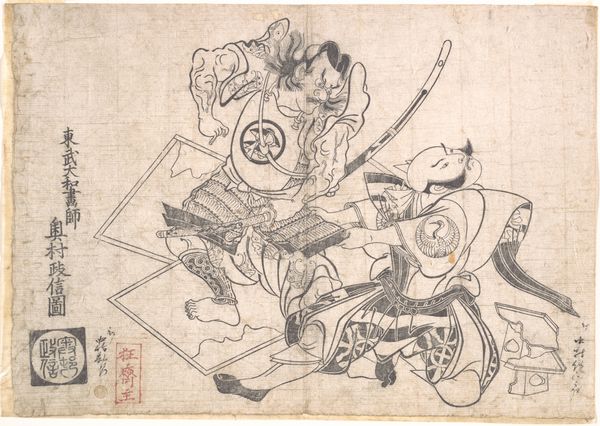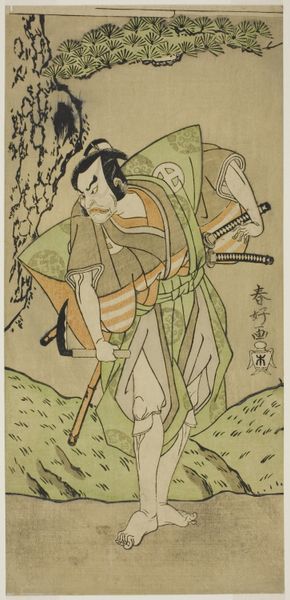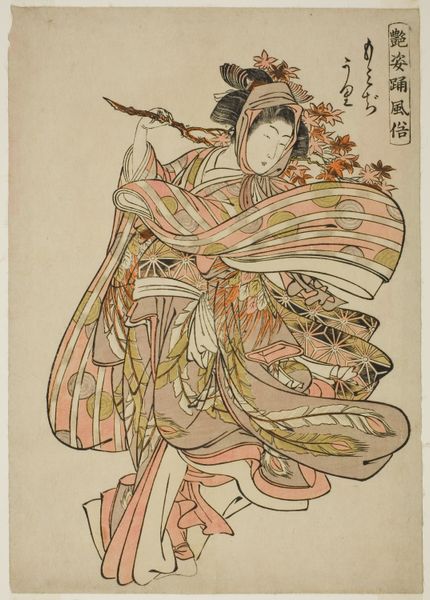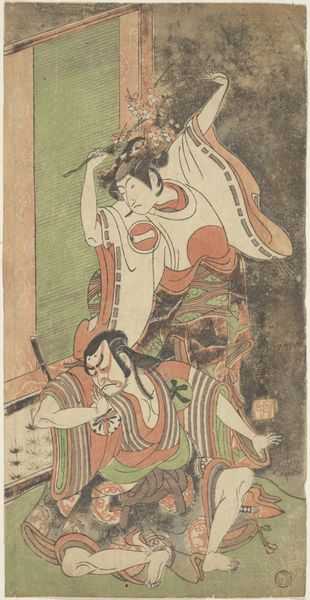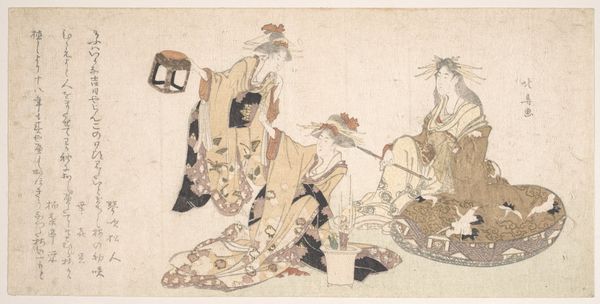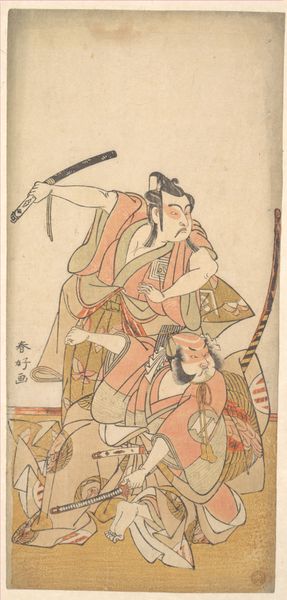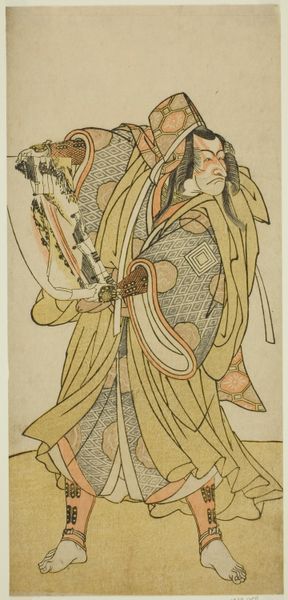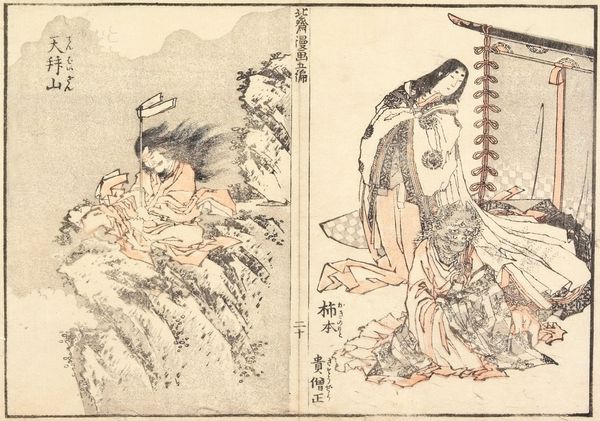
The Festive Custom of Asahina Continued by Jihinari for Twenty-three years (Nijusan-nen tsuzuki Jihinari kichirei Asahina) 1820
0:00
0:00
print, woodblock-print
#
water colours
#
narrative-art
# print
#
asian-art
#
ukiyo-e
#
japan
#
figuration
#
woodblock-print
#
watercolor
Dimensions: 19.3 × 53.9 cm (7 9/16 × 21 3/16 in.)
Copyright: Public Domain
Editor: This intriguing woodblock print, "The Festive Custom of Asahina Continued by Jihinari for Twenty-three years," dates to 1820 and is by Utagawa Toyohiro. The scene has a peculiar sort of energy with this imposing figure pulling a child on a decorated cart. What’s your read on what's happening in this image? Curator: Well, what strikes me immediately is the public display of what appears to be a deeply personal, localized tradition. We see what the title tells us has been practiced for twenty-three years, making this a spectacle tied directly to community memory. The exaggerated features of the character evoke a folk performance. Are we looking at the romanticized vision of local pride, or a critique of spectacle? Editor: I see your point about the possible critique of spectacle. I mean, is the exaggerated depiction celebratory, or is there a sense of otherness being emphasized for consumption? Curator: Precisely. Consider the rise of ukiyo-e prints and their role in popularizing cultural scenes for a wider audience. How does depicting this very specific tradition for the print market affect the original ritual’s significance? Was this art feeding into and perhaps altering folk practices themselves? Editor: So, this image may not just document a festival, but actually play a role in how it was perceived, or even shaped? Curator: Exactly! The print becomes an active participant in shaping that public narrative. It prompts us to think about who gets to define “culture” and what power structures are at play in the image itself. It really gets me thinking about the politics of visibility. Editor: I never considered the active role of these prints outside of mere documentation. This completely shifted my perspective of the print and its wider influence. Curator: And that is why considering the social role of art helps unpack multiple readings, moving beyond mere surface impressions.
Comments
No comments
Be the first to comment and join the conversation on the ultimate creative platform.


